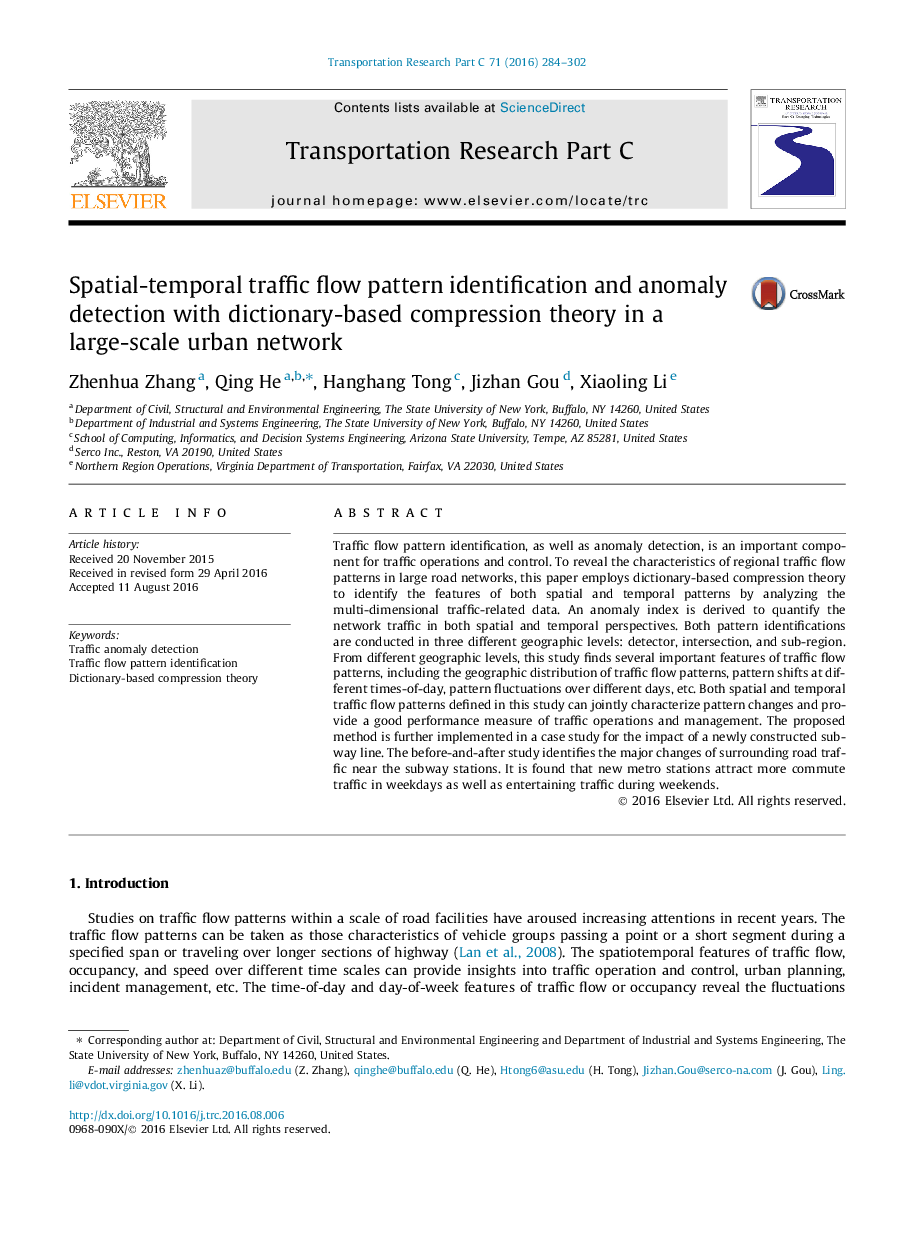| Article ID | Journal | Published Year | Pages | File Type |
|---|---|---|---|---|
| 6936325 | Transportation Research Part C: Emerging Technologies | 2016 | 19 Pages |
Abstract
Traffic flow pattern identification, as well as anomaly detection, is an important component for traffic operations and control. To reveal the characteristics of regional traffic flow patterns in large road networks, this paper employs dictionary-based compression theory to identify the features of both spatial and temporal patterns by analyzing the multi-dimensional traffic-related data. An anomaly index is derived to quantify the network traffic in both spatial and temporal perspectives. Both pattern identifications are conducted in three different geographic levels: detector, intersection, and sub-region. From different geographic levels, this study finds several important features of traffic flow patterns, including the geographic distribution of traffic flow patterns, pattern shifts at different times-of-day, pattern fluctuations over different days, etc. Both spatial and temporal traffic flow patterns defined in this study can jointly characterize pattern changes and provide a good performance measure of traffic operations and management. The proposed method is further implemented in a case study for the impact of a newly constructed subway line. The before-and-after study identifies the major changes of surrounding road traffic near the subway stations. It is found that new metro stations attract more commute traffic in weekdays as well as entertaining traffic during weekends.
Related Topics
Physical Sciences and Engineering
Computer Science
Computer Science Applications
Authors
Zhenhua Zhang, Qing He, Hanghang Tong, Jizhan Gou, Xiaoling Li,
